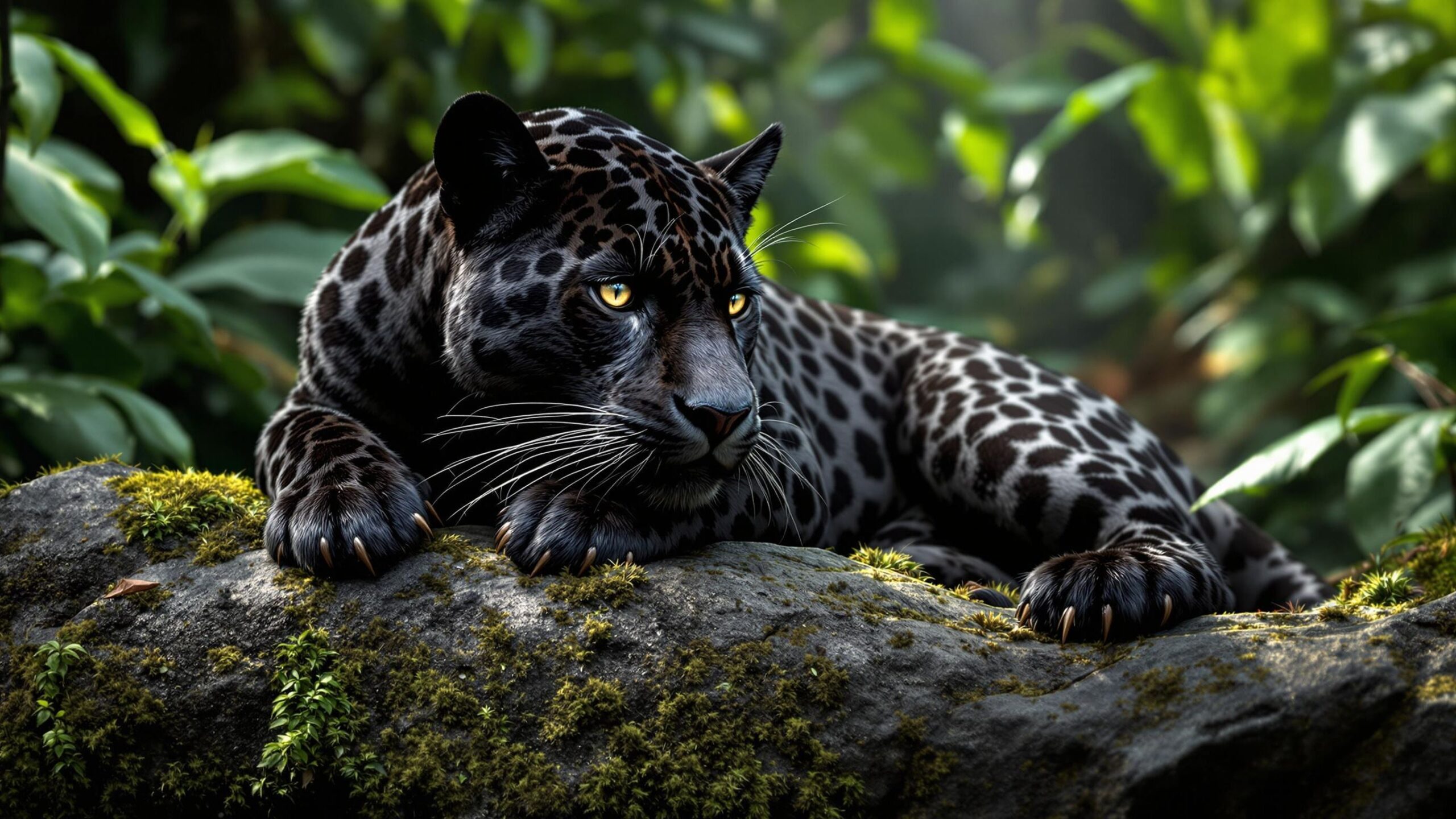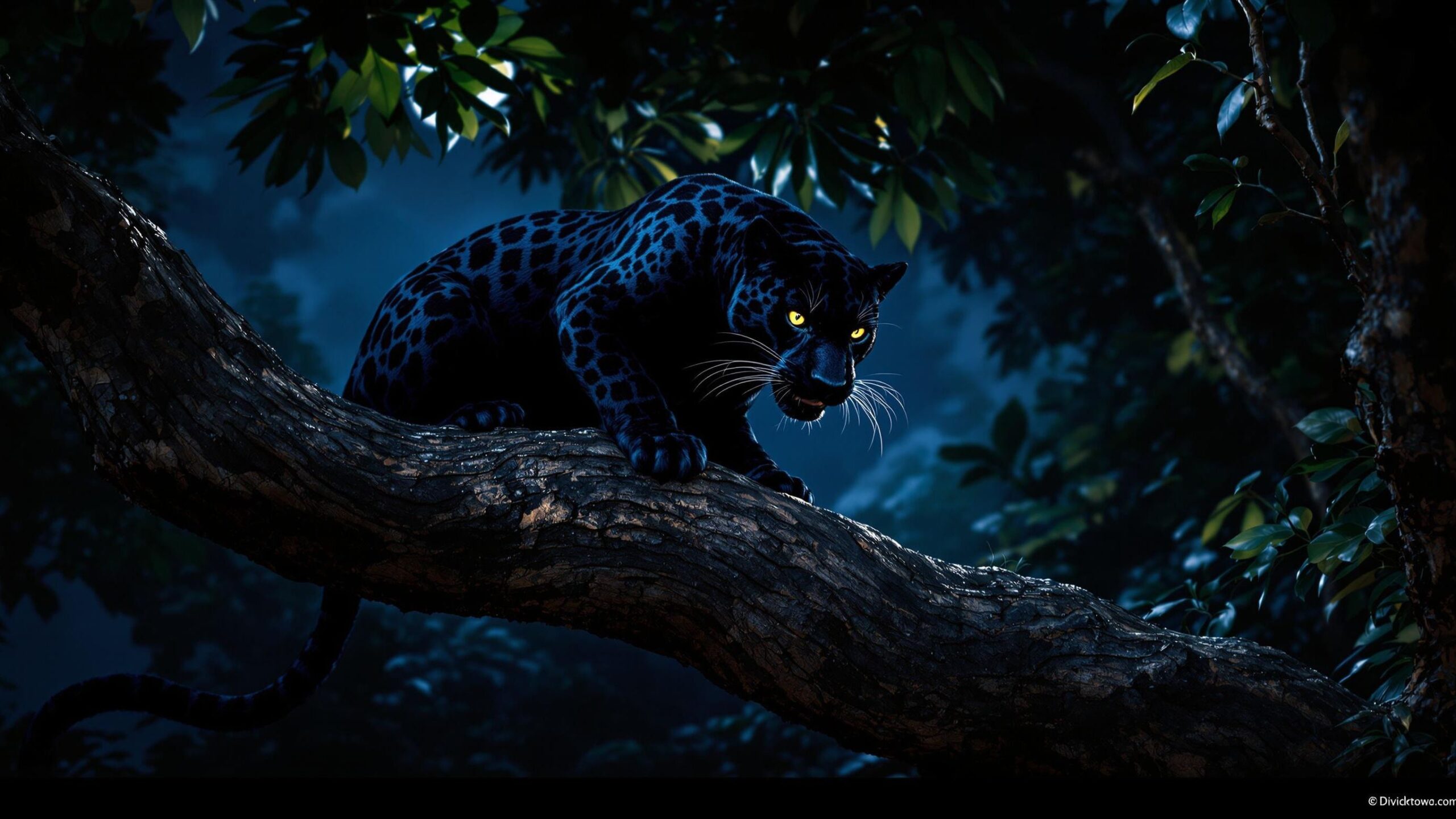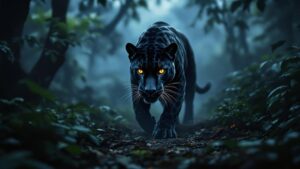The Black Jaguar: Nature’s Elusive Phantom
The Black Jaguar (Panthera onca) stands among the most enigmatic and awe-inspiring creatures of the animal kingdom. As a melanistic variant of the jaguar, this shadowy predator exudes mystery and raw power, captivating all who glimpse its dark silhouette slinking through the rainforests of the Americas. With its gleaming, charcoal-hued coat and piercing golden eyes, the black jaguar has become the subject of countless myths, a symbol of strength, and a fascinating example of nature’s genetic artistry. This article dives deep into the world of the black jaguar—its biology, behavior, habitat, and place in human culture—bringing its story to life for readers of all backgrounds.
A Striking Twist of Genetics
To understand the black jaguar, one must first recognize what it truly is: not a separate species, but a color morph of the jaguar (Panthera onca), the largest cat in the Americas and the third largest in the world. The black coloration stems from a condition called melanism, caused by a dominant allele that leads to an overproduction of the dark pigment melanin. This gives the black jaguar its dusky, near-black coat. However, if you look closely in the right light, you’ll often still see the jaguar’s signature rosettes—those beautiful, intricate markings—hidden beneath the surface, like ghostly patterns etched in shadow.
Melanism in jaguars is more common than in most big cats, with some estimates suggesting that around 6 to 11 percent of wild jaguar populations carry the gene. This mutation likely provides certain survival advantages in dense rainforest environments, particularly in regions with dim lighting and thick cover, where stealth is everything.
Home of the Shadows: Where Black Jaguars Live
The black jaguar’s natural range overlaps with that of all jaguars, spanning from the southern United States to northern Argentina. However, these melanistic individuals are most commonly sighted in the rainforests of the Amazon Basin, southern Mexico, and parts of Central America. Dark-coated cats are better camouflaged in the low-light, lush undergrowth of these regions, making them both more elusive and more effective as ambush predators.
Their territories are vast, often ranging from 10 to over 100 square miles, depending on prey availability and landscape. Jaguars—black or otherwise—are solitary animals, coming together only to mate. Males typically roam larger ranges that may overlap with several female territories, while females remain closer to the regions best suited for raising cubs.
A Masterful Predator
Black jaguars are apex predators, unmatched in the ecosystem. Their bodies are incredibly muscular and compact, built for explosive bursts of power rather than speed over long distances. What truly sets jaguars apart, however, is their jaw strength. Among all big cats, jaguars have the most powerful bite relative to body size—capable of piercing turtle shells and even crushing the skulls of caimans.
Their hunting technique is uniquely brutal: rather than suffocating their prey with a throat bite as lions do, jaguars bite directly into the skull or spine, severing the central nervous system in one decisive motion. This method is swift, efficient, and highly effective in environments where a failed ambush could mean going hungry for days. Their diet is extremely diverse, featuring over 80 species of prey. From deer, peccaries, and tapirs to monkeys, snakes, birds, and even fish, black jaguars are not picky eaters. Their adaptability is one of their greatest evolutionary assets.

Living in Silence: Behavior and Communication
Black jaguars, like their lighter-colored kin, are stealthy and secretive. They spend the majority of their time alone, patrolling their ranges, scent-marking trees, and avoiding unnecessary encounters with other predators or even fellow jaguars. Despite their solitary nature, they do communicate—using vocalizations like roars, grunts, and meows, along with scent markings and claw scrapes on trees. These cats are primarily nocturnal or crepuscular, meaning they are most active at night or during twilight hours. This not only helps them avoid the heat of the day but gives them an edge in ambush hunting. Their low-light vision is excellent, and in combination with their camouflage, makes them nearly invisible in the dense forest.
From Birth to Independence: Life Cycle
Female black jaguars usually give birth to one to four cubs after a gestation period of about 100 days. The cubs are born blind and helpless, weighing just about two pounds. For the first few weeks, they remain hidden in dens—often tucked away in thickets, caves, or hollow logs—completely dependent on their mother for warmth, food, and protection.
As they grow, the cubs begin to venture out with their mother, learning the vital skills of stalking and hunting through play and observation. By six months, they are already trying to bring down small prey. Most cubs stay with their mothers for up to two years before striking out to claim their own territories. Interestingly, not all cubs born to melanistic parents will be black themselves. Because melanism is inherited as a dominant trait, even one copy of the gene can produce a black jaguar, but standard golden-spotted siblings can appear in the same litter.
Legends of the Jungle: Black Jaguars in Culture
Across Central and South America, the jaguar has long held deep symbolic significance, particularly among ancient civilizations such as the Maya, Aztec, and Inca. Often seen as a bridge between the spiritual and earthly worlds, the jaguar was revered as a deity of power, protection, and the night. The black jaguar, cloaked in darkness, was considered even more mysterious—linked to the underworld, the moon, and hidden wisdom.
In modern times, black jaguars continue to captivate imaginations. They have appeared in folklore, novels, films, and even superhero lore. From the jungle protector Bagheera in The Jungle Book to elusive guardians in fantasy stories, these creatures symbolize a rare blend of beauty and fearlessness.
Conservation Status: A Silent Struggle
The overall jaguar species is listed as Near Threatened on the IUCN Red List, with certain populations classified as endangered due to habitat loss, poaching, and human-wildlife conflict. As forests are fragmented by agriculture, mining, and road building, jaguar territories shrink and become isolated. This not only threatens their survival but also reduces genetic diversity—especially critical for rarer morphs like the black jaguar.
Melanistic jaguars are not separately tracked in most conservation databases, making it difficult to know their exact numbers. However, because they occur most frequently in humid forest environments, efforts to protect Amazonian and Central American rainforests are likely to have an outsized impact on their future. Community-led conservation, protected corridor networks, and anti-poaching measures are all part of ongoing strategies to secure jaguar populations. Thankfully, the black jaguar’s enigmatic nature has become a rallying symbol for conservation, helping to draw attention and resources to jaguar habitats across the Americas.
Black Panther or Black Jaguar?
It’s a common point of confusion: people often refer to black jaguars as “black panthers.” But what exactly is a panther? “Panther” is a catch-all term. In the Americas, it typically refers to jaguars; in Africa and Asia, it refers to leopards. So a black panther could be a melanistic jaguar or a melanistic leopard, depending on the region. Both species can carry the genetic mutation for melanism, though it is more common in jaguars in the Americas and in leopards in Southeast Asia. So while the term “black panther” is widely accepted in popular culture, the scientifically accurate label for these shadowy cats of the Americas is black jaguar.
A Rare Encounter: Ecotourism and Photography
Spotting a black jaguar in the wild is incredibly rare. Their nocturnal habits, secretive behavior, and remote forest habitats make sightings almost legendary. However, with the growth of responsible ecotourism in areas like the Pantanal in Brazil and parts of Costa Rica and Belize, some lucky travelers and photographers have managed to catch these elusive animals on camera.
Photographs of black jaguars are prized for their dramatic contrast and the ethereal quality of their appearance. In infrared and trail camera footage, their rosettes are often easier to distinguish, revealing the hidden beauty beneath the surface. For wildlife enthusiasts, naturalists, and conservation photographers, even the possibility of witnessing a black jaguar in the wild makes the long, humid treks through the jungle worthwhile.

Mystique in Motion: Why They Fascinate Us
There’s something profoundly magnetic about the black jaguar. Its sleek, obsidian coat seems almost too perfect for nature—like a creature born from shadows rather than flesh and blood. It is this combination of power, elegance, and elusiveness that makes the black jaguar stand apart, even among the world’s great predators. In a world increasingly disconnected from wilderness, the black jaguar is a powerful reminder of the Earth’s untamed beauty. It embodies survival against the odds, evolution’s ingenuity, and the enduring majesty of wild things left to roam free.
The Future in Focus
While the black jaguar remains a symbol of mystery, its future depends on real-world action. The protection of tropical forests, support for indigenous land rights, sustainable development, and education programs that foster coexistence between humans and big cats are all key. The more we understand and appreciate these extraordinary animals, the more likely we are to ensure their continued presence in the world. Seeing a black jaguar is like seeing a dream materialize in the real world—fleeting, powerful, unforgettable. And if we’re wise, we’ll make sure that dream doesn’t disappear into myth.

Black Jaguar
The Black Jaguar: Nature’s Elusive Phantom The Black Jaguar (Panthera onca) stands among the most enigmatic and awe-inspiring creatures of the animal kingdom. As a melanistic variant of the jaguar, this shadowy predator exudes mystery and raw power, captivating all who glimpse its dark silhouette slinking through the rainforests of the Americas. With its gleaming, charcoal-hued coat and piercing golden eyes, the black jaguar has become the subject of countless

